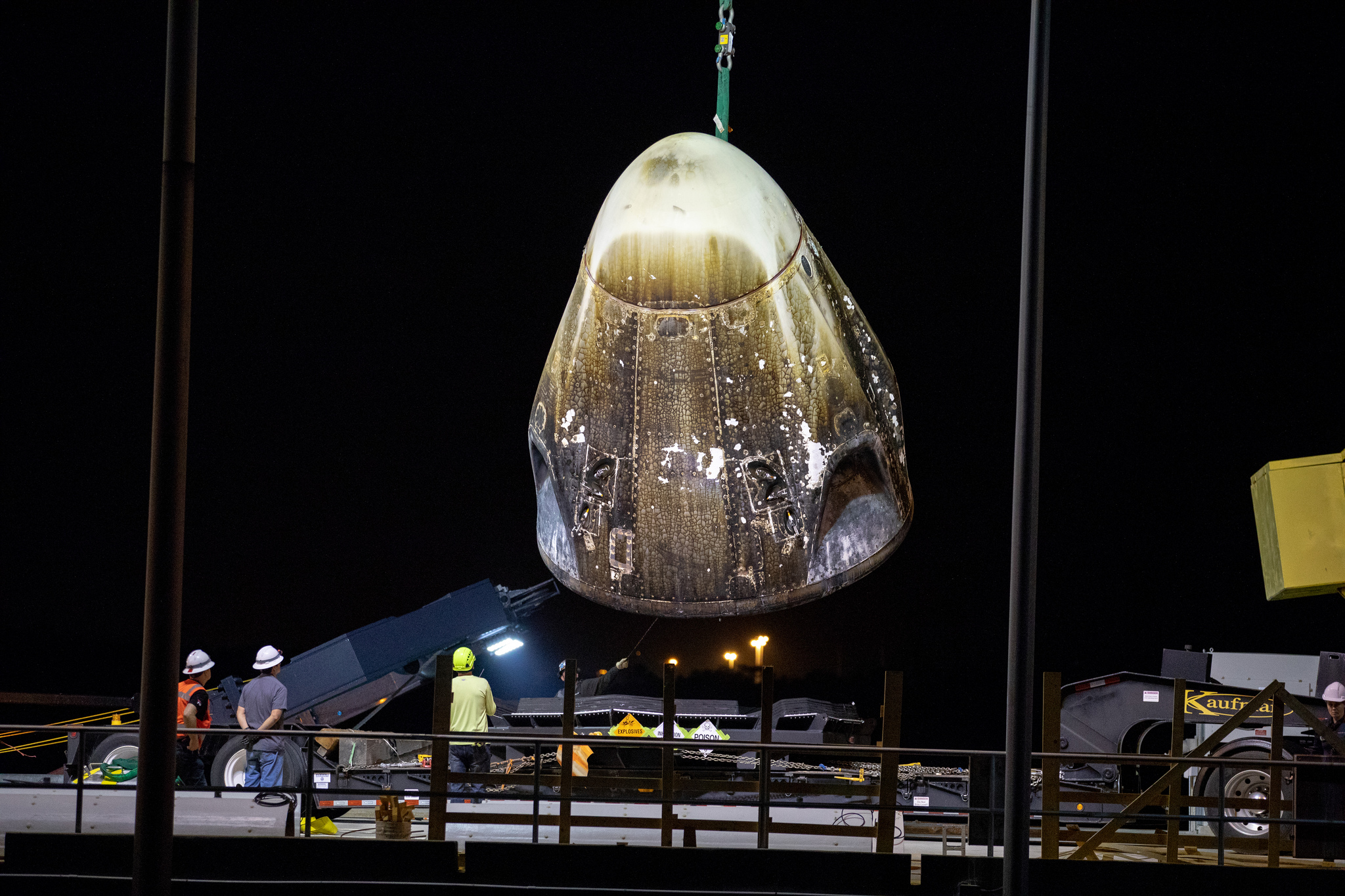SpaceX Crew Dragon Accident May Impact NASA Plans to Launch Astronauts from US Soil
SpaceX and NASA need to know what went wrong.

An explosion that may have destroyed a test version SpaceX's Crew Dragon spacecraft during an engine test on Saturday (April 20) could push back NASA's plans to begin launching astronauts from U.S. soil this summer.
"The NASA and SpaceX teams are assessing the anomaly that occurred today during a part of the Dragon Super Draco Static Fire Test at SpaceX Landing Zone 1 in Florida," NASA administrator Jim Bridenstine said via Twitter Saturday night. "This is why we test. We will learn, make the necessary adjustments and safely move forward with our Commercial Crew Program."
Ever since NASA's space shuttle program ended in 2011, the agency has relied on Russia's Soyuz rocket-capsule combo to transport astronauts to and from the International Space Station. NASA aims to end its reliance on Russian space vehicles by launching astronauts from U.S. soil using both SpaceX's Crew Dragon and Boeing's CST-100 Starliner crew capsules.
Related: SpaceX Crew Dragon Capsule Suffers Anomaly During Engine Test
SpaceX has already completed one successful uncrewed test mission of the Crew Dragon last month. For the Demo-1 mission, the Crew Dragon spacecraft launched to the International Space Station on March 2 and returned to Earth with a splashdown in the Atlantic Ocean one week later. When recovery workers pulled the capsule out of the water, the charred spacecraft resembled a toasted marshmallow.
Although the Demo-1 mission did not have a crew on board, SpaceX did put a sensor-packed test dummy named Ripley inside the capsule to collect data during the flights to and from the space station. The first Crew Dragon mission with astronauts on board was scheduled to launch no earlier than July 25, although that date is likely to slip after Saturday's accident.
Meanwhile, Boeing's Starliner is scheduled to launch on its first uncrewed test mission in August — a date that has already slipped by about a year from its initial targeted launch date of August 2018. Although it seemed like SpaceX would beat Boeing to launching the first crewed mission in a commercial spacecraft, the fiery anomaly with SpaceX's test of the Crew Dragon over the weekend could be a setback for both SpaceX and NASA.
Get the Space.com Newsletter
Breaking space news, the latest updates on rocket launches, skywatching events and more!
The Crew Dragon capsule that was damaged during Saturday's engine test was the same Crew Dragon that completed the Demo-1 mission in March, a SpaceX spokesperson told Space.com in an email. SpaceX initially planned to reuse that Crew Dragon capsule on future commercial crew missions, SpaceX's chief executive Elon Musk has said. But depending on the extent of the damage, the capsule may now no longer be reusable.
"Initial data reviews indicate the anomaly occurred during the SuperDraco static fire test; additional review will be required to determine the probable cause," the SpaceX spokesperson said. "SpaceX will continue to work closely with our NASA partners to review the test data and implement corrective actions ... We will take lessons learned from this test — and our rigorous comprehensive test campaign — to ensure Crew Dragon is one of the safest human spaceflight vehicles ever built."
SpaceX has not yet reported details about the exact cause of the anomaly or the extent of the damage to the capsule and Landing Zone 1, where the explosion occurred. Space.com will post more updates as we learn more.
- SpaceX's Next Space Station Cargo Launch Delayed to April 30
- NASA Approves Extension of Boeing Starliner Commercial Crew Test Flight
- Here's What Elon Musk Had to Say to NASA's Chief Before SpaceX's 1st Crew Dragon Test Flight (Video)
Email Hanneke Weitering at hweitering@space.com or follow her @hannekescience. Follow us on Twitter @Spacedotcom and on Facebook. Original article on Space.com.
Join our Space Forums to keep talking space on the latest missions, night sky and more! And if you have a news tip, correction or comment, let us know at: community@space.com.

Hanneke Weitering is a multimedia journalist in the Pacific Northwest reporting on the future of aviation at FutureFlight.aero and Aviation International News and was previously the Editor for Spaceflight and Astronomy news here at Space.com. As an editor with over 10 years of experience in science journalism she has previously written for Scholastic Classroom Magazines, MedPage Today and The Joint Institute for Computational Sciences at Oak Ridge National Laboratory. After studying physics at the University of Tennessee in her hometown of Knoxville, she earned her graduate degree in Science, Health and Environmental Reporting (SHERP) from New York University. Hanneke joined the Space.com team in 2016 as a staff writer and producer, covering topics including spaceflight and astronomy. She currently lives in Seattle, home of the Space Needle, with her cat and two snakes. In her spare time, Hanneke enjoys exploring the Rocky Mountains, basking in nature and looking for dark skies to gaze at the cosmos.









